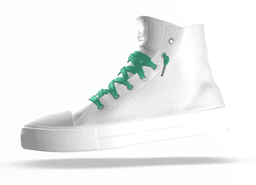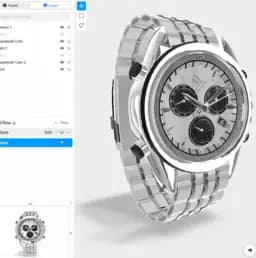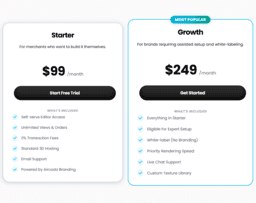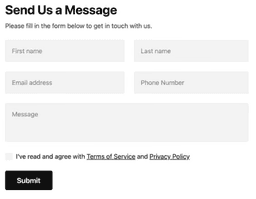Can Leap Motion Really Outdo Ultraleap?
For developers prioritizing advanced tracking and haptic technology, integrating the Ultraleap platform is the logical choice. Its natural interaction with digital content, power-saving improvements, and wider compatibility edge out the now-older Leap Motion system.

Key Differences Between Leap Motion and Ultraleap
- Founding Year: Leap Motion was founded in 2010 while Ultraleap was formed in 2019 as the merger of Leap Motion and Ultrahaptics.
- Tracking Accuracy: Both systems offer precise tracking, however, Ultraleap has improved with a higher resolution camera and expanded field of view.
- Product Development: Ultraleap shows progress in power consumption and package size compared to Leap Motion.
- Hardware Integration: Ultraleap’s hardware can seamlessly integrate with VR/MR/AR headsets, PCs, and holographic displays while Leap Motion had compatibility primarily with VR headsets and PCs.
| Comparison | Leap Motion | Ultraleap |
|---|---|---|
| Founded | 2010 | 2019 |
| Tech Focus | Hands and Finger Motions Sensor Device | Hand Tracking and Haptic Technology |
| First Product Launched | May 21, 2012 | Leap Motion Controller 2 |
| Software Developer Program Launched | October 2012 | Not Available |
| Units Distributed at Initial Launch | 12,000 | Not Available |
| Partnerships | ASUS, Hewlett Packard, Best Buy, Newegg, Amazon.com | ASUS, Hewlett Packard, Best Buy, Newegg, Amazon.com |
| Acquisition Details | Acquired by Ultrahaptics in May 2019 | Formed from union of Leap Motion & Ultrahaptics in 2019 |
| Device Integration | Eleven HP devices, including keyboards and laptops | VR/MR/AR headsets, PCs & holographic displays |
| Peak Valuation | $300 million in 2013 | Not Available |
| Hardware Use Cases | Enhancing VR experiences, complex task mastering, LEDs control, 3D MIDI control, 3D audio mixing | Natural interaction with digital content in 3D |
| Compatible Operating Systems | Windows, macOS, Android XR2 | macOS, Android XR2, Windows (planned) |
| Applications | Gesture-based interaction, VR training, digital content navigation, 3D manipulation | VR experiences with Pico, PC VR with Varjo Aero, Android XR2 with Lenovo’s VRX headset, AR with ARGO by DigiLens |
What Is Leap Motion and Who’s It For?
Leap Motion, born as OcuSpec Inc., and later acquired and merged by Ultrahaptics to form Ultraleap, is a tech company that crafts devices and software for hand and finger motion tracking. It has revolutionised the use of computer sensor technology and specializes in enhancing the Virtual Reality (VR) experience. Leap Motion is aimed at those interested in groundbreaking technology that interfaces the real world with the digital, from designers and engineers to gamers, VR enthusiasts, and Vtubers.

Pros of Leap Motion
- Advanced sensor technology for granting natural interactions in a digital environment.
- High precision with an overall accuracy of 0.7 millimeters.
- Compatibility with popular platforms: Windows, macOS, and Android XR2.
- Highly versatile for multiple uses such as VR training, 3D MIDI control, digital content navigation and 3D manipulation.
Cons of Leap Motion
- Mixed reception for Leap Motion Controllers.
- Full-scale shipping of the first product was delayed.
- Peak valuation objectives fell short after initial launch hype.
What Is Ultraleap and Who’s It For?
Ultraleap, established in 2019 through the amalgamation of Leap Motion and Ultrahaptics, presents an advanced interface experience by enabling touch sensation in mid-air and hand tracking. Geared towards individuals and industries desiring an intuitive and immersive interaction with digital content, it caters to game developers, educators, Vtuber presenters, and artists, among others.

Pros of Ultraleap
- Specializes in haptic technology and hand tracking, propelling forward the VR/AR/MR interaction realm.
- Offers a diverse array of tools and resources such as Unity, Unreal, and OpenXR integration.
- Previous iteration, Leap Motion Controller, sold over 1M units and has supported more than 350,000 developers.
- Compatibility with multiple platforms and devices, facilitating widespread application.
Cons of Ultraleap
- Mixed reception for past products despite notable accuracy.
- Product sales failed to match initial hype.
- Though ambitious, the Orion software is considered imperfect.
Code Examples for Leap Motion & Ultraleap
Leap Motion
This JavaScript snippet uses the Leap Motion’s Hand and Pointable classes to trigger an event when the user’s index and thumb tips touch. This requires a Leap Motion hardware and LeapJS library to be imported.
const controller = new Leap.Controller();
controller.on('frame', function(frame) {
if (frame.hands.length > 0) {
for (var i = 0; i < frame.hands.length; i++) {
const hand = frame.hands;
if (hand.indexFinger.tipPosition.distanceTo(hand.thumb.tipPosition) < 25) {
console.log('Index finger and thumb are touching');
}
}
}
});
controller.connect();Ultraleap
This Python snippet uses Ultraleap’s Hand Tracking module, demonstrating how to retrieve palm position of the user’s hand. This requires Ultraleap’s Python SDK and camera module to be installed.
import Leap
controller = Leap.Controller()
frame = controller.frame()
if frame.hands.is_empty:
print('No Hands Detected')
else:
for hand in frame.hands:
print('Palm Position: {}'.format(hand.palm_position))Leap Motion or Ultraleap: The Showdown Verdict
In a tech-driven world, selecting the ideal partner for your AR/VR needs stands pivotal. Both Leap Motion and Ultraleap hold distinctive advantages. Our verdict is segmented per user category, to help you make the best choice.
VR/AR Developers
For those developing VR/AR experiences, the Leap Motion’s specialty in hardware sensor devices for hands and finger motions input offers a robust, immersive interactive ecosystem. Its compatibility with various VR headsets including Pico, HTC, and Varjo, and its advanced hand tracking technology, make it a more suitable choice.

Educators and Designers
Designers and educators can leverage the interface design prowess of Ultraleap to enhance the learning and design experience. Ultraleap’s focus on hand tracking, haptic technology, and machine learning positions it well for creating interactive and intuitive designs, or crafting immersive educational experiences.

Game Makers
Considering gaming? Leap Motion provides a future-ready game development arena, with a legacy of successful game jams and a global developer force. Leap Motion’s Orion software built for VR gives developers a cutting edge advantage in crafting next-gen gaming experiences.

Ultimately, Leap Motion, with its legacy in AR/VR tech, emerges as a strong choice for developers, game makers and VR enthusiasts. However, the combined expertise of Leap Motion and Ultrahaptics that Ultraleap brings, with its focus on hand-tracking and haptic technology, makes it an intriguing choice especially for educators and designers.







